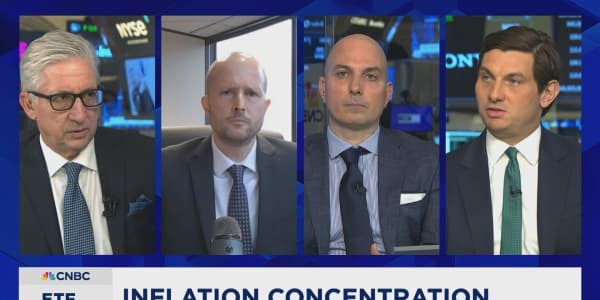
ANTs have arrived.
The first-ever actively managed, nontransparent exchange-traded funds, or ANTs, officially began trading last week, a major milestone that some see as a first step to changing the face of the ETF industry.
Unlike traditional ETFs, nontransparent ETFs are not required to disclose their portfolio holdings on a daily basis, a plus for active managers worried about getting front-run on their strategies. Instead, some will disclose their holdings monthly or quarterly, while others will point buyers to similarly structured mutual funds or share their holdings without disclosing the exact weightings.
The first nontransparent ETFs were launched in late March by investment management firm American Century, which dubbed them the American Century Focused Dynamic Growth ETF (FDG) and the American Century Focused Large Cap Value ETF (FLV).
Ed Rosenberg, senior vice president and head of ETFs at American Century, told CNBC's "ETF Edge" on Monday that the newly launched funds have been trading well "right off the bat."
FDG is up nearly 13% since it began trading on April 2, while FLV is up almost 12%.
"The first day, they each traded over 100,000 shares each, and spreads have been at a good level ... since they've launched," Rosenberg said, referring to the bid-ask spreads, or the differences between the prices buyers will pay and sellers will accept for given assets.
"There's been investor interest as they slowly get up on platforms," Rosenberg said. "So, ... people have been buying."
That may not come as much of a surprise given the strategies behind these funds. FDG partly tracks American Century's Focused Dynamic Growth Fund, which counts widely popular stocks including Amazon, Alphabet and Facebook, while FLV will take up the popular cause of picking stocks that are "temporarily out of favor," according to its prospectus.
FDG and FLV will both hold between 40 and 60 stocks, Rosenberg said. FDG costs 45 basis points to own, while FLV costs 42 basis points, he said.
There could be an unexpected benefit to ANTs being new to the scene, too, Rosenberg said.
"I was checking with some of the main websites that publish the holdings of every ETF and asked them what percentage of people that visit the site actually look at the holdings, and it's way lower than I anticipated," he said. "They said it was only 15%. So, if you eliminate the people that really look for holdings, this is just an ETF to everyone else."
Both FDG and FLV climbed to new highs in Thursday's trading session.





